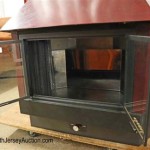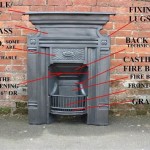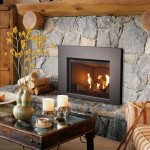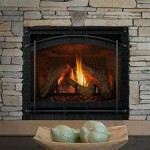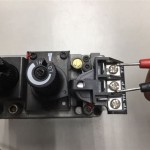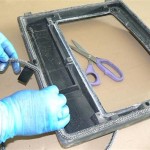How To Turn Off Pilot Light On A Regency Gas Fireplace
Regency gas fireplaces are known for their efficiency and aesthetic appeal, providing warmth and ambiance to homes. While convenient for consistent heat, there are times when turning off the pilot light becomes necessary. This could be during warmer months to save on gas consumption, for safety reasons during extended periods of absence, or as part of troubleshooting a malfunction. Understanding the process and safety precautions involved in turning off the pilot light is crucial to ensure the fireplace operates safely and effectively in the future.
This article provides a detailed guide on how to safely and effectively turn off the pilot light on a Regency gas fireplace. Note that specific models may have slight variations in their control panels and procedures. Always refer to the owner's manual for the specific model of your Regency fireplace for the most accurate instructions. If you are uncomfortable performing these steps, it is recommended to contact a qualified gas fireplace technician.
Identifying the Pilot Light Assembly
Before you begin the process of turning off the pilot light, it is important to locate and identify the pilot light assembly. This is typically found within the firebox of the fireplace, often near the main burner. You'll need to be able to see the small flame of the pilot light and identify the gas valve control knob. The location can vary slightly depending on the Regency model, but it is generally accessible without requiring extensive disassembly. You may need a flashlight to get a good view of the controls, especially in fireplaces with intricate log sets.
The pilot light assembly usually consists of the pilot light itself (a small nozzle that emits the gas), a thermocouple or thermopile (a safety sensor that detects the pilot light's presence), and the gas control valve. The gas control valve will have markings indicating the different positions, usually including "ON," "OFF," and "PILOT." Familiarizing yourself with the arrangement of these components before starting any procedure is crucial for performing the task safely and efficiently.
In some Regency models, a decorative panel or log set might need to be carefully removed to access the pilot light assembly. Refer to your owner's manual for specific instructions on how to safely remove these components. Ensure the fireplace is cool before attempting to remove any parts to avoid burns.
Step-by-Step Instructions for Turning Off the Pilot Light
Once you have located and identified the pilot light assembly, you can proceed with turning off the pilot light. Follow these steps carefully to ensure the process is completed safely.
Step 1: Turn off the Gas Supply. The first and most important step is to turn off the gas supply to the fireplace. Locate the main gas shut-off valve, typically found on the gas supply line leading to the fireplace. This valve is usually a quarter-turn ball valve. Turn the valve so that the handle is perpendicular to the gas line. This cuts off the gas supply to the fireplace, preventing any further gas flow.
Step 2: Locate the Gas Control Valve Knob. Find the gas control valve knob. This knob is usually labeled with “ON,” “OFF,” and “PILOT” positions. It may also have arrows indicating the direction to turn the knob.
Step 3: Push and Turn the Knob to the “OFF” Position. Gently push in the gas control valve knob and turn it to the "OFF" position. The knob may require some force to push in, as this disengages the valve mechanism. Once the knob is in the "OFF" position, release the pressure. The knob should remain in the "OFF" position without needing to be held. Some models may require you to push and continuously hold the knob in the "OFF" position for a few seconds to ensure the gas supply is completely shut off before releasing. Always consult the owner's manual for specific instructions related to your model's gas control valve.
Step 4: Verify the Pilot Light is Extinguished. After turning the gas control valve knob to the "OFF" position, visually verify that the pilot light is extinguished. Look carefully at the pilot light assembly to ensure no flame is present. If the pilot light is still burning, repeat steps 2 and 3. If it persists, there may be an issue with the gas valve, and it is advisable to contact a qualified gas fireplace technician.
Step 5: Allow Time for Gas to Dissipate. After turning off the pilot light, allow a few minutes for any residual gas in the lines to dissipate. This minimizes the risk of gas accumulating in the firebox. You can open a window or door to help ventilate the area. Do not attempt to relight the pilot light immediately after turning it off. Allow sufficient time for the gas to dissipate to ensure safe relighting in the future.
Step 6: Replace any Removed Components. If you removed any decorative panels or log sets to access the pilot light assembly, carefully replace them according to the instructions provided in the owner's manual. Ensure all components are securely in place before using the fireplace again. Incorrectly replaced components can affect the fireplace's performance and safety.
Safety Precautions and Troubleshooting
Working with gas appliances requires adherence to strict safety precautions to prevent accidents. Familiarize yourself with these precautions before turning off the pilot light on your Regency gas fireplace.
Gas Leaks: Before, during, and after turning off the pilot light, be vigilant for the smell of gas. If you detect a gas odor, immediately evacuate the area and contact your local gas company or emergency services. Do not use any electrical devices, including lights or phones, as these could potentially ignite the gas. Gas leaks are a serious hazard and must be addressed immediately.
Proper Ventilation: Ensure adequate ventilation while working with gas appliances. Open windows and doors to allow fresh air to circulate. This helps to prevent the buildup of gas fumes, which can be dangerous. Proper ventilation is especially important when relighting the pilot light after it has been turned off.
Consult the Owner’s Manual: Always refer to the owner’s manual for your specific Regency gas fireplace model. The manual provides detailed instructions and safety information specific to your appliance. Following the manufacturer’s instructions is crucial for safe and effective operation. Owner’s manuals can often be found online if the physical copy is misplaced.
Professional Assistance: If you are unsure about any step of the process or encounter any difficulties, do not hesitate to contact a qualified gas fireplace technician. Attempting to repair or modify gas appliances without proper training can be dangerous. A qualified technician has the knowledge and tools to diagnose and resolve any issues safely and effectively.
Pilot Light Won’t Stay Lit: If you are having trouble keeping the pilot light lit before turning it off, it might indicate a problem with the thermocouple or thermopile. These sensors are designed to shut off the gas supply if the pilot light is not detected, preventing gas from leaking into the house. If you suspect a faulty thermocouple or thermopile, it is recommended to contact a qualified technician for inspection and replacement.
Gas Valve Malfunction: If the gas control valve knob is difficult to turn or feels stuck, do not force it. This could damage the valve and potentially cause a gas leak. Contact a qualified technician for assistance. A malfunctioning gas valve may require replacement.
Carbon Monoxide Detectors: Ensure you have functioning carbon monoxide detectors installed in your home, especially near gas-burning appliances. Carbon monoxide is a colorless, odorless gas that can be deadly. A carbon monoxide detector will alert you to the presence of this gas, allowing you to take immediate action.
By following these instructions and taking the necessary safety precautions, you can safely and effectively turn off the pilot light on your Regency gas fireplace. Regular maintenance and inspections are also crucial to ensure the safe and efficient operation of your fireplace.

How To Start A Gas Fireplace Re Light The Pilot Regency
How To Start A Gas Fireplace Re Light The Pilot Regency

How To Start A Gas Fireplace Re Light The Pilot Regency

How To Engage Continuous Pilot Mode On Regency Lri Hri Gas Inserts With Low Profile Front

How To Light The Pilot With A Direct Spark Ignition System

How To Shut Off Gas Fireplace With Standing Pilot

Fireplace Pilot Light Tutorial

Regency P33 Sunrise Gas Fireplace

How To Light The Pilot With A Direct Spark Ignition System

Gas Fireplace Pilot Light Out How Can I It Again
Related Posts

